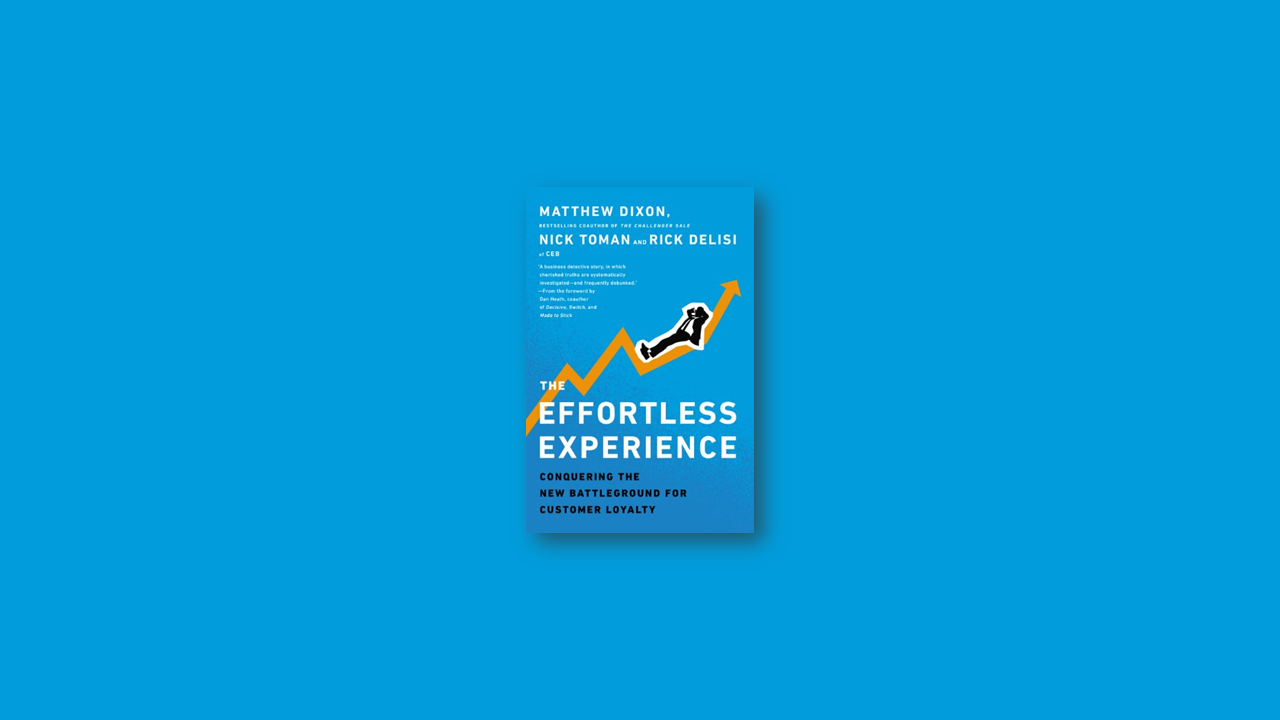The new battleground for customer loyalty
Delighting customers in the service channel doesn’t always pay. Customers whose expectations are exceeded are only marginally more loyal than those expectations are borderline met.
Customer service doesn’t always drive customer loyalty. But customer service almost always drives customer disloyalty. It’s four times more likely for customer service to make a customer disloyal rather than make them loyal. The key to prevent this is through reducing customer effort by making service easier and more delightful. This includes paying attention to trivial matters such as avoiding having to repeat information, contact the company repeatedly, switch channels, being transferred and being greeted by an answering machine.
Why your customers don’t want to talk to you
Most customers would rather self-service than to talk to a customer service rep. And service leaders should aim to get their costumes, try self-service as well as stay in self-service. Over half all inbound calls are from customers who were on the company website, trying unsuccessfully to solve their problems.
The key to mitigating channel switching is simplifying the self-service experience. Most channels fail not because they lack content because they have too much of it. The best service companies aggressively simplify their web site and actively guide customers to the channels and content that best address issues they have.
The worst question a service rep can ask
Customers who had their issue often call back for reasons indirectly related to the original issue. The most common causes of repeat contacts come from adjacent issues (meaning downstream implications linked to the original issue) and experience issues (meaning the customer doesn’t like the experience or the answer they received).
The best service companies don’t just solve the issue at hand, they think of the next issue. Issues are hardly one-offs. They’re events that teach companies to forward-resolve so it goes unnoticed by the customer until later.
Measure callbacks, not just first contact resolution (FCR). FCR is flawed for one major reason. FCR focuses on the stated issue, rather than related downstream issues. Instead, the best service companies measure callbacks within a limited time frame – assessing whether the rep has solved both the statued issue and follow-up issues.
Just because there’s nothing you can do doesn’t mean there’s nothing you can do
Effort is one-third ‘do’ and two-thirds ‘feel’. Much of customer effort is driven by their perception of whether the interaction is effortful, not whether they actually have to exert undue effort during the interaction.
Being nice alone isn’t enough to manage customer perception. The term ‘experience engineering’ differs in both form and purpose from traditional soft skills. It’s deeply rooted in behavioral economics, relying on purposeful language to generate a positive response to an outcome that may not be good news.
To get control, you have to give control
In this era of heightened customer expectations, what distinguishes the best service reps from mediocre ones is their ability to assess and control the situation. The term ‘control quotient (CQ’) is the ability to exercise judgement and maintain composure in a high-pressure, complex service environment.
CQ is a skill everyone can learn. While CQ is a differentiating factor, in reality, most service reps have average to high CQ potential. The problem is companies inhibit reps from exercising CQ due to the excessive red tapes they’ve reinforced for years.
To allow service reps to tap into their full CQ potential, companies need to exercise trust in rep judgment. Companies may consider de-emphasising handle time, taking away QA checklist, clarifying reps’ alignment between their actions and company’s objectives, and allowing reps to tap into collective experience and knowledge of their peers.
The disloyalty detector – customer effort score v2.0
Customer Effort Score (CES) is a way to assess the ease of resolution in post-service surveys. CES is a powerful indicator of customer loyalty and clearly highlights friction points in the customer experience.
While CES is a powerful tool, it’s not a silver bullet when it comes to measuring customer effort. The best companies collect data at multiple levels and from multiple sources to understand not just whether the customer effort is happening but also the root causes of effort.
Making low effort stick
The best service companies understand that effort reduction isn’t taught in a classroom. Training can be useful to build awareness but effort reduction involves frontline behavior change which can only be delivered through firsthand supervised coaching.
Asking reps to simply go out and reduce effort without giving them a clear goal will most likely result in failure and confusion. Narrowly scope initial pilot expectations for teams. This many include forward-solving specific types of issues or using positive language for common issues. Provide heightened support and coaching as pilots get comfortable with the experiments.
Effort beyond the contact center
Effort should be reduced throughout the life cycle, not just in an initial touchpoint. Research shows reducing customer effort in pre- and post-sales touch points has a measurable loyalty impact. The ease with which customers can learn about products or services, make a purchase and obtain after-sales support provides brands a tremendous opportunity to stand out.
The best service companies not just embrace low-effort, they live it. Top brands are adopting low-effort principles across multiple touch points with their customers. These companies don’t hesitate to question the status quo, like “should a customer wait in line to pay for something?”, “should a customer ever be required to read a manual before operation?”. If you ask them, they’d argue that’s simply not acceptable.

